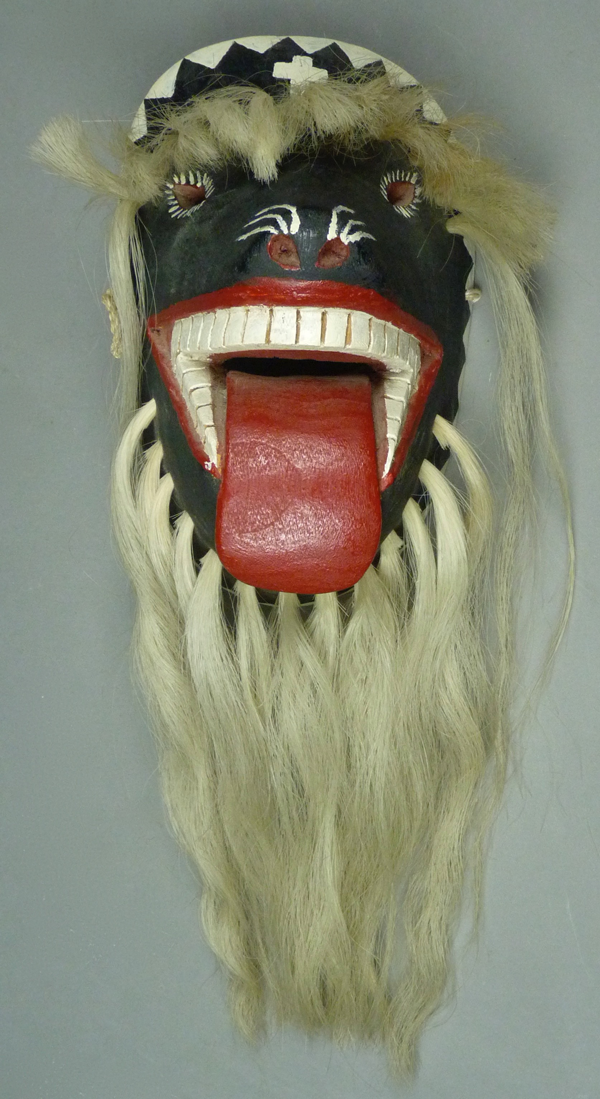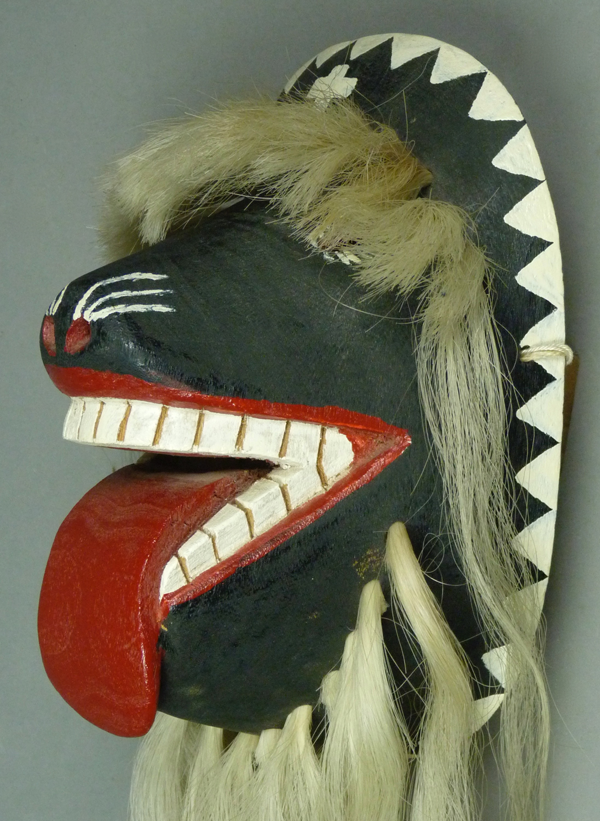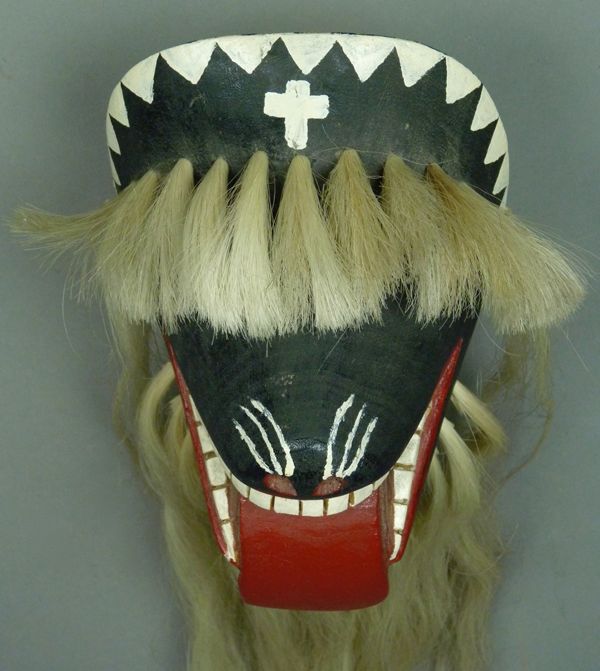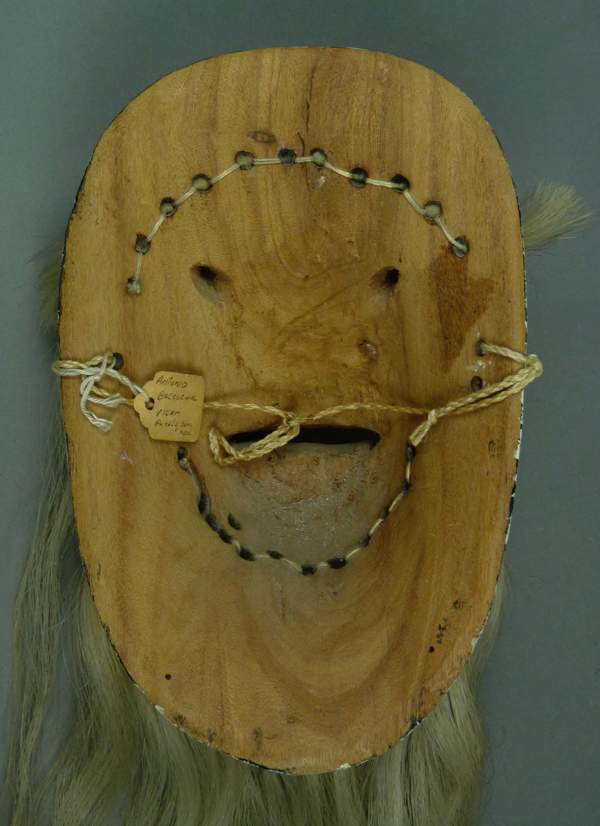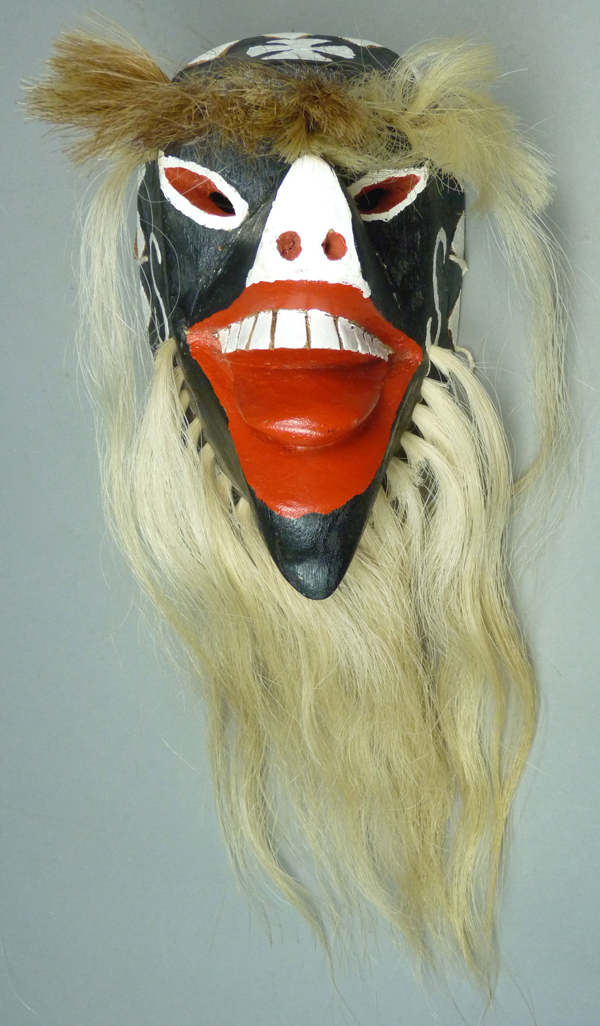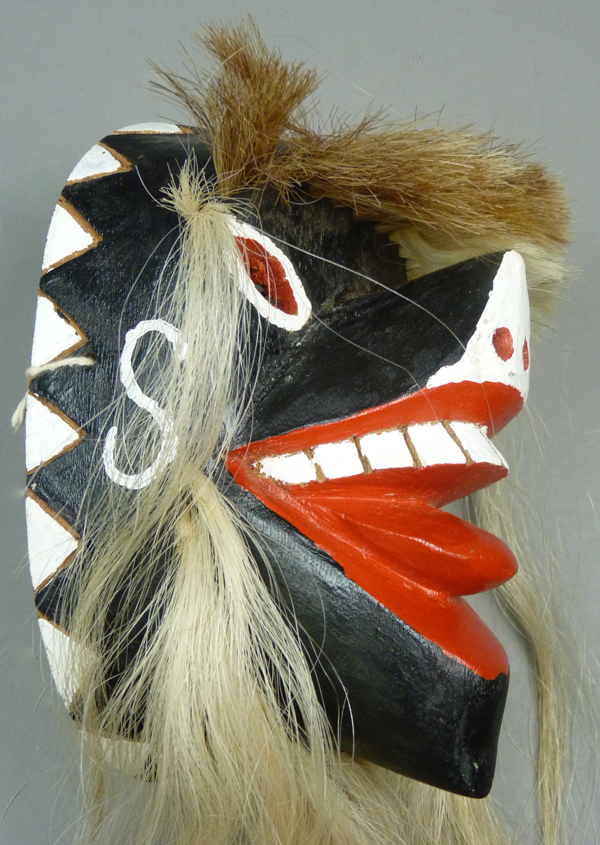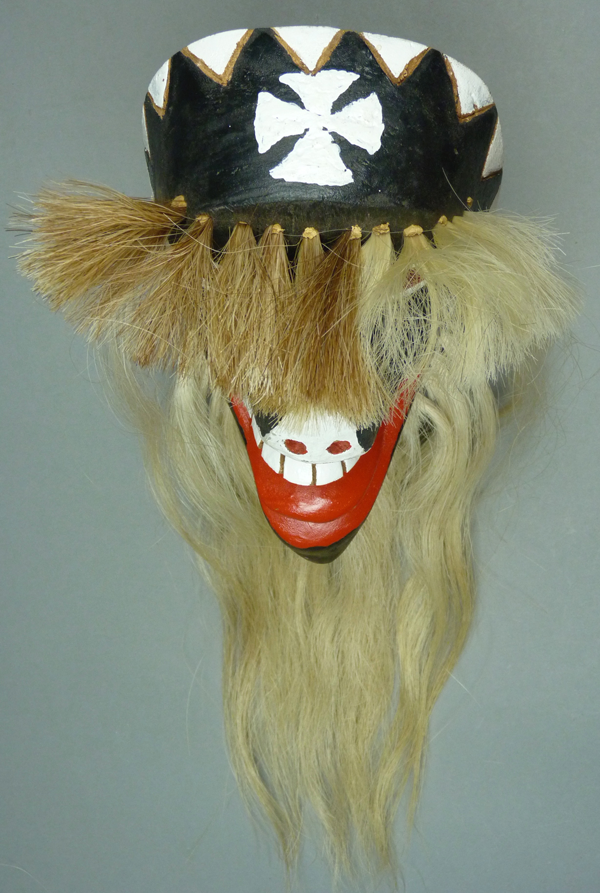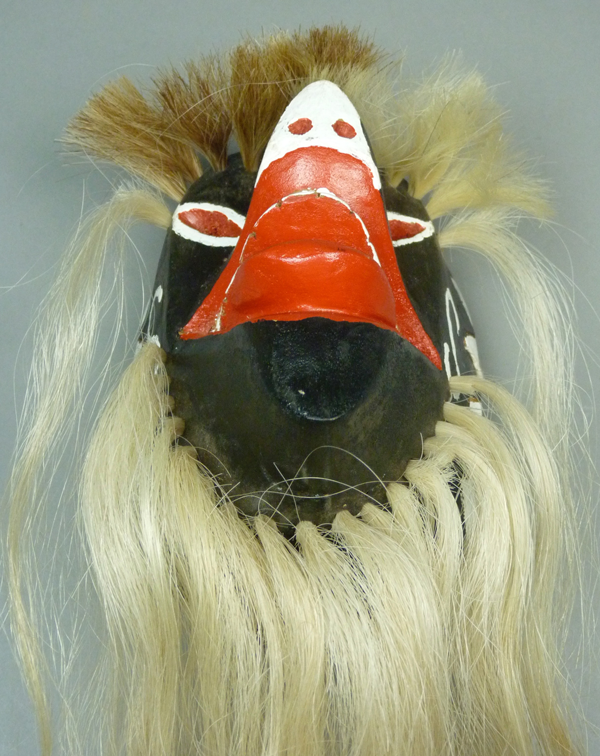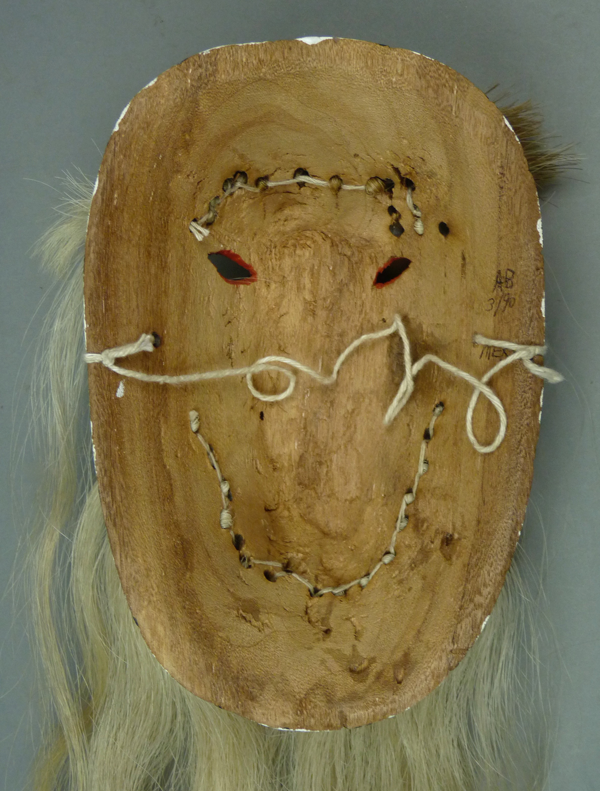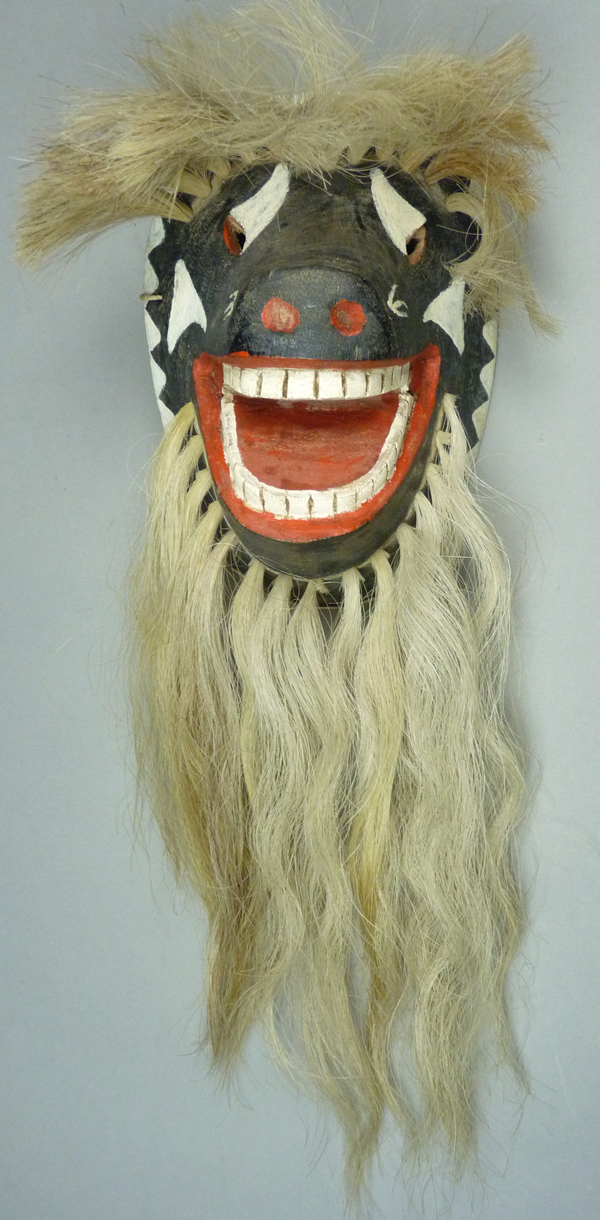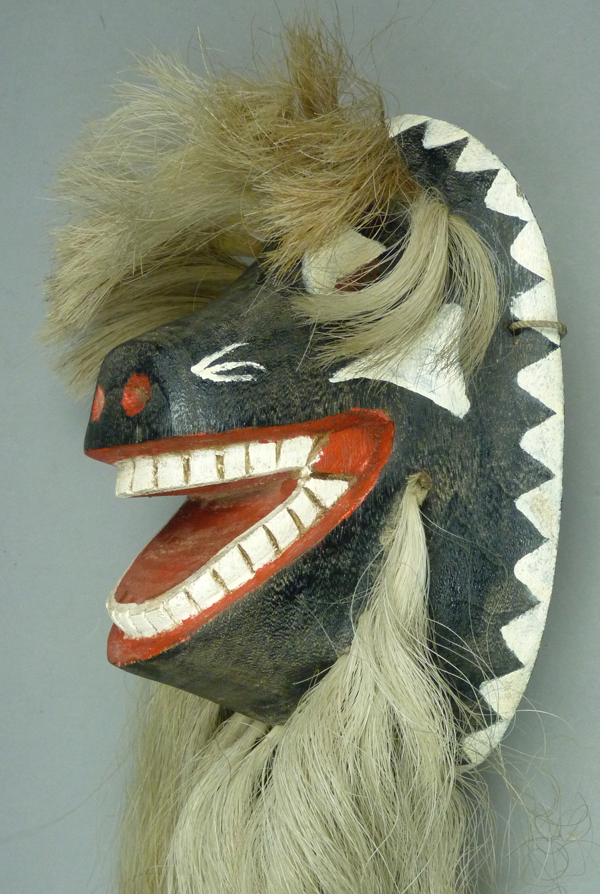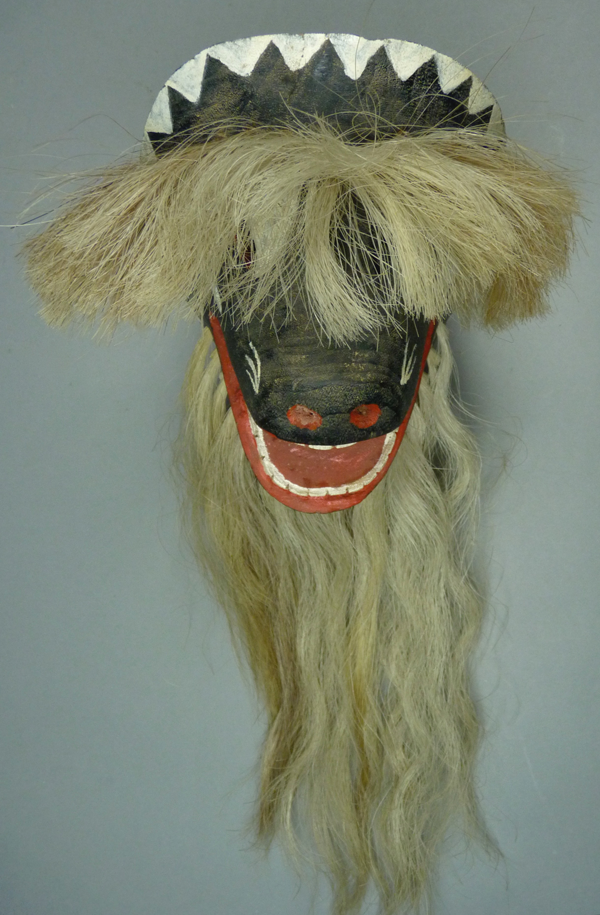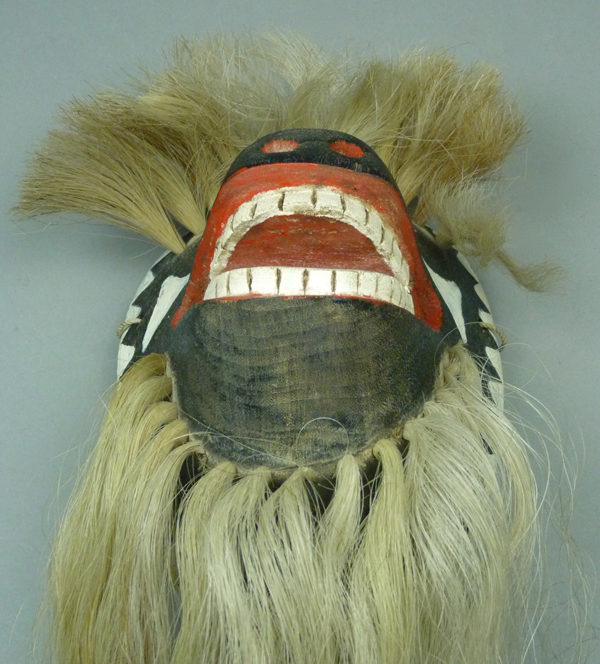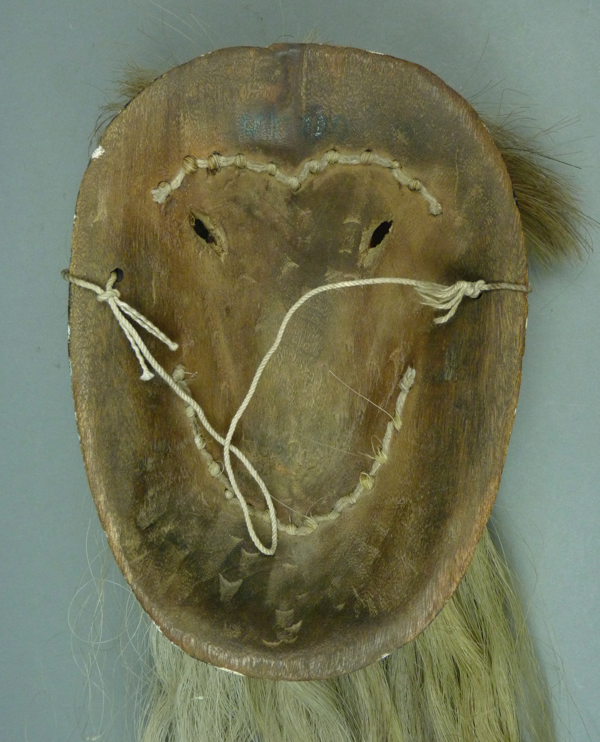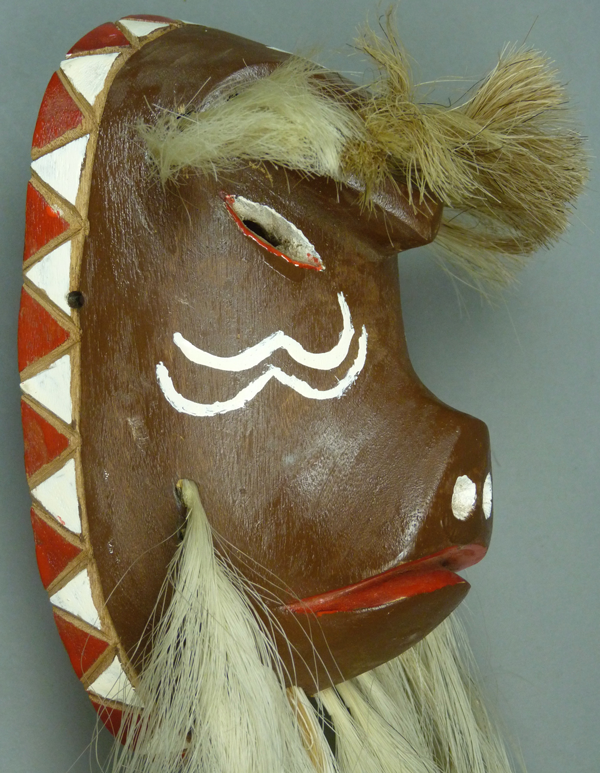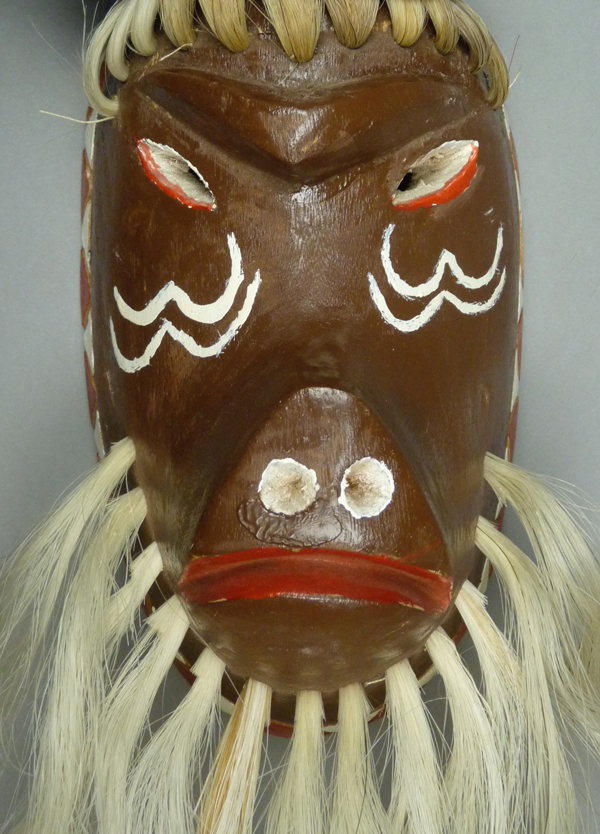This series of posts about Yoeme (Yaqui) Pascola masks began on July 4, 2016.
In this post and the next I will continue to present Yoeme Pascola masks by Antonio Bacasewa. Today we will look at canine Pascola masks, old and new, along with an unusual made for sale mask with the face of a bull. I will start with a made for sale dog Pascola mask that was probably collected from a dancer at Barrio Libre (Tucson) in the 1980s.
This is an excellent mask, but the design detail that really stands out is the graceful extended tongue.
You may have already noticed that Antonio uses either the Maltese cross or the Christian cross, and that his masks seldom have a chin cross.
Sometimes Antonio paints mask decorations within inscribed lines, but frequently he paints freehand, as on this mask.
This mask is 8½ inches tall, 5¼ inches wide, and 4 inches deep.
The back of this mask has mild staining around the rim from use.
Here is a second made for sale canine mask by Antonio. Or maybe I should acknowledge that this is my best guess. As my friend Tom Kolaz has sometimes commented in our conversations, some of Antonio’s animal masks are so difficult to characterize that one is safer to call them “critters” or some term like that. To say this in another way, Antonio tends to carve human and animal faces in an abstract style. Here is such a critter.
Is this a dog, a pig, or what? In next week’s post I will show you a mask by Antonio that actually look like a pig, so I am not inclined to grant that label to this mask. It bears repeating that Antonio’s masks have an abstract quality.
Perhaps it is also useful to remember, when encountering such a mask, that the Pascola dancer has an important role as a clown. Within a decade after canine masks appeared in Yaqui dances, Pascola masks with the faces of circus clowns followed.
In this last photo it is easy to see the wooden pegs that Antonio places to spread the hair bundles.
This animal has a sculptural face. One is forced to recognize the artistic aspect of Antonio’s carving. Sure, he carved masks with the hope of building up some cash in an otherwise subsistence economy, but did he have to carve so elaborately?
This mask is 7¾ inches tall, 5 inches wide, and 4 inches deep.
If one compares the backs of Antonio’s various designs, they all look the same; Antonio had a very uniform approach to the carving of the backs of his masks. Barney Burns and Mahina Drees collected this mask and documented the carver’s initials and the month and year of collection on the back, along with the name of the country of origin—AB, 3/90, Mexico.
I purchased the next mask from the Phoenix Gallery in Georgetown, District of Columbia in 1995. It did not have an identified carver and was estimated to date from the 1940s. However, because it is my impression that canine Pascola masks were probably invented in the 1950s or later, I have never put much stock in that 1940s date. As you will probably recognize, there is far less ambiguity when one attempts to identify the carver. This is clearly the work of Antonio Bacasewa.
From this angle view in the following photo we can even see a wooden peg. In fact, every hair bundle on this mask is pegged.
One way to observe age in a mask is to notice how the surface of the wood grows irregular as the wood seasons; look at the nose of this mask.
This mask is 8¼ inches tall, 5¾ inches wide, and 3¾ inches deep.
On the chin, I am again noticing the grain of the wood emerging through the worn paint.
This mask does demonstrate remarkable staining from use, which is probably the reason someone estimated that this mask dated from the 1940s. This is definitely an old and heavily used mask. On the other hand, the strap (string) is brand new, a replacement. The original strap may have been made from rawhide.
I will end this post with a made for sale mask by Antonio that appears to represent a bull. I purchased this mask in the museum shop of the Field Museum, in Chicago, back in the 1990s.
At first glance this mask looks like a pig.
But what a sharp brow you have, Mr. Pig.
I had to pull back the brow hair in order to reveal the miniature set of horns. This is the face of a bull.
This mask is 8 inches tall, 4¾ inches wide, and 3½ inches deep.
Next week I will show Pig and Monkey Pascola masks carved by Antonio Bacasewa.

